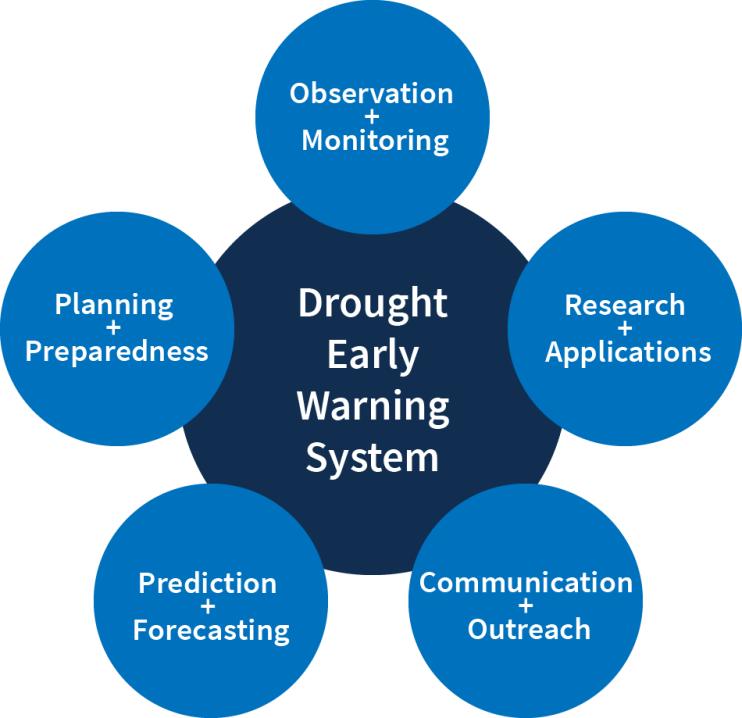Drought Early Warning Activities
Each regional drought early warning system (DEWS) focuses on improving early warning capacity for and resilience to drought in that region, including examining the role of extreme weather events and climate variability in drought.
NIDIS has developed regional drought early warning systems (DEWS) throughout the United States, where local networks of researchers, resource managers, policymakers, the private sector, academics, and other stakeholders share information and actions to help their communities cope with drought.
A DEWS coordinates this network of key regional partners so that decision makers and citizens can systematically approach drought monitoring and forecasting integration when planning and preparing for drought. Regional DEWS encourage innovation by integrating new, locally relevant drought information, and supporting the introduction and testing of technologies that detect and communicate drought risks and warnings.
Regional DEWS activities focus on five key areas for drought early warning (DEWS components): observation and monitoring, prediction and forecasting, planning and preparedness, communication and outreach, and interdisciplinary research and applications.

Drought Early Warning Activities
The table below shows ongoing activities related to drought early warning across the United States. Each activity falls into one or more of the five key areas of drought early warning systems (DEWS components): observation and monitoring, planning and preparedness, prediction and forecasting, communication and outreach, and interdisciplinary research and applications.
In order to ensure the inclusion of indigenous perspectives in the implementation of the regional drought early warning systems (DEWS), NIDIS launched a Tribal Drought Engagement Project in…
2019
2019
Provide the lead U.S. Drought Monitor author state-level input each week on drought conditions and local interpretations on drought indices for Oregon.
In July 2021, the Upper Mississippi River Basin Association (UMRBA) Board established a set of three-year objectives for advancing its long-term floodplain resilience planning goals. Reflecting on…
2022
2024
This project aimed to use rings of Cottonwood trees to reconstruct climate conditions approximately 250 years (back to around the year 1770, pre‐reservation era). This will …
2017
2018
With funding from the National Oceanic and Atmospheric Administration, the project team is working to improve the radar-based Standardized Precipitation Index (SPI) and SPI blends that they…

